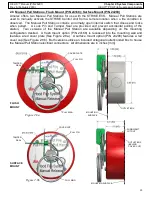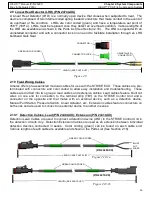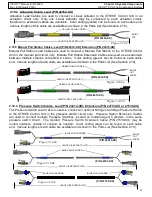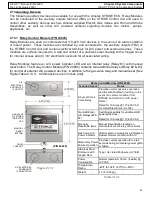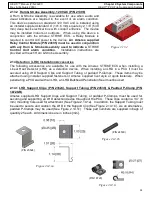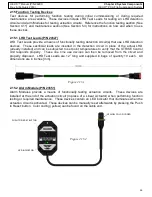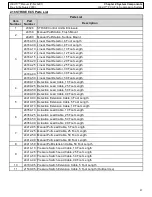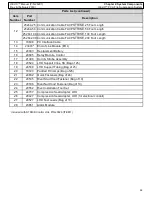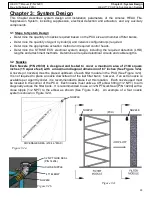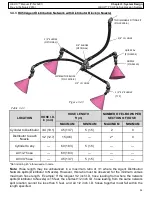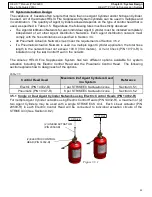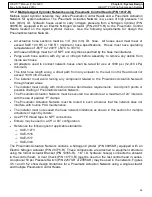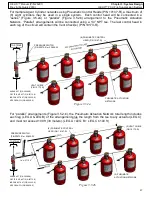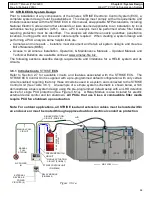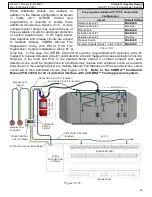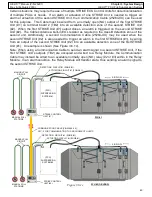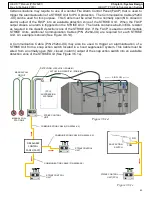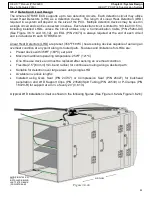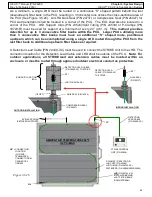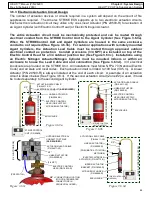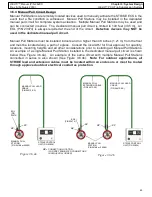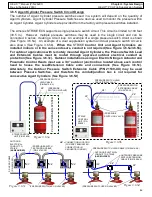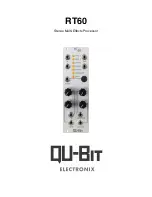
31
HELIX™ Manual
(P/N 26291)
Chapter 3: System Design
Rev A (February 2018)
HELIX™ PCU
Fire Suppression System
3.4 Agent Distribution Network Design
After determining Nozzle and Agent Cylinder quantities and location(s), the Agent Distribution
Network must be designed for transferring the Dry Chemical Agent to the Nozzles. This is
accomplished using hydraulic hoses, fittings, tees, and/or Distributor Blocks. Use the following
requirements for constructing the Agent Distribution Network:
Note: The following requirements are applicable to the Agent Distribution Network ONLY.
Refer to Section 3.5.2 for Pneumatic Actuation Network requirements.
•
After the Cylinder Bracket is installed, vertical Agent Cylinders must be installed with the
discharge outlet facing the
direction that will allow the Discharge Fitting Kit to be easily
connected to the Agent Distribution Network (See Figure 4.2.1).
•
The Agent Distribution Network must be secured to the PCU at a maximum of 24” intervals with
use of padded “P” clamps.
•
The Agent Distribution Network must be routed in such a manner that the
network does not
interfere with routine maintenance.
•
The installer must be aware of maximum ambient temperature ratings for hose selection and not
to exceed those temperature ratings during normal equipment operation.
•
When installing the Agent Distribution Network, the installer must comply with the hose
manufacturer’s minimum hose bend radius requirements. Avoid pinch points or possible chafing
of the network.
•
The number of Nozzles used in the Agent Distribution Network must match what is specified in
Table 3.3 for the Agent Cylinder used.
•
The installer must not exceed the Agent Distribution Network limitations as shown in this section.
See Sections 3.4.1 thru 3.4.3 for Agent Distribution Network configurations.
•
Use PTFE thread tape for NPT connections in the Agent Distribution Network.
•
Elbows may be used in a 45° or 90° configuration but cannot exceed quantities as shown in the
Tables in Sections 3.4.1 thru 3.4.3.
•
All hoses used must meet or exceed SAE 100 R5 or 100 R1 (minimum) hose specifications.
Hoses must have operating temperatures of –65°F to + 200°F (
-
54°C to +93°C).
•
All hose end fittings must be only those specified by the hose manufacturer.
•
All fittings (elbows, tees, reducers, couplers…etc.) used for connection of the Agent Distribution
Network must be minimally rated for use at the maximum Agent Cylinder operating pressure. If
fittings are located in a corrosive environment, appropriate fitting material must be considered.
•
Reference the following list of applicable standards:
SAE J1273
SAE J516
SAE J517
SAE J343



